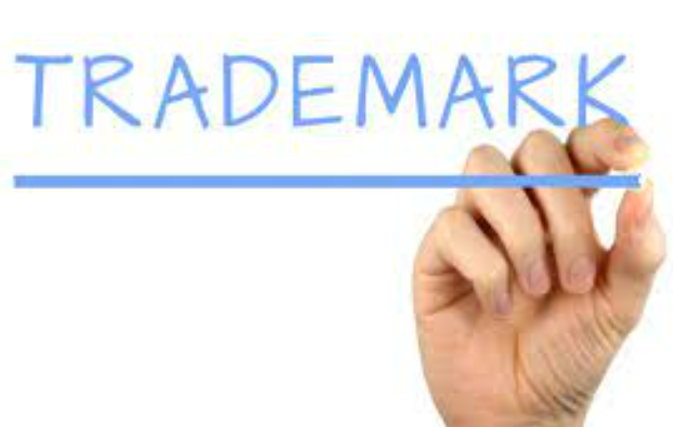International Trademark Registration
International trademark registration in Delhi can be pursued through the Madrid System for the International Registration of Marks, which is governed by two treaties: the Madrid Agreement Concerning the International Registration of Marks (Madrid Agreement) and the Protocol Relating to the Madrid Agreement (Madrid Protocol). This system simplifies the process of registering trademarks in multiple countries by allowing applicants to file a single international application through their national trademark office, which is then transmitted to the World Intellectual Property Organization (WIPO). Contact us now.

International trademark registration in Delhi
Basic Trademark Registration: Before applying for international registration, you must have a valid trademark registration or application in your home country (known as the “basic application” or “basic registration”). This serves as the basis for your international application.
Submit an International Application: Once you have a basic application or registration, you can submit an international application through the Madrid System. The application is filed with the International Bureau of WIPO in Geneva, Switzerland, using the official application form.
Designate Member Countries: In the international application, you can designate one or more member countries where you seek trademark protection. The designated countries must be members of the Madrid Protocol, which is the primary treaty governing the Madrid System.
Examination by WIPO: WIPO examines the international application to ensure that it complies with the requirements of the Madrid Protocol. If the application meets the formalities and procedural requirements, WIPO records the international registration and notifies the designated countries.
Examination by Designated Countries: Each designated country conducts its own examination of the International trademark registration in Delhi with in the framework of its national trademark laws and procedures. The examination may involve substantive review of the trademark’s registrability and compliance with local requirements.
Grant of Protection: If the designated countries approve the international registration, the trademark is granted protection in those countries. The trademark enjoys the same rights and benefits as if it were registered directly with the national trademark office of each country.
Centralized Management and Maintenance: The Madrid System offers centralized management and maintenance of international registrations. Changes, renewals, and other administrative actions can be processed through WIPO, simplifying the management of trademark portfolios across multiple countries.
Duration and Renewal: International trademark registrations have a duration of 10 years and can be renewed indefinitely for successive 10-year periods. Renewals are processed through WIPO and apply to all designated countries.
Documents Required for International Trademark Registration
Basic Application or Registration: You must have a valid trademark application or registration in your home country (known as the “basic application” or “basic registration”) as the basis for your international application. The basic application or registration serves as the foundation for seeking trademark protection in multiple countries.
International Application Form: You need to complete the official international application form provided by WIPO. The application form includes information about the applicant, the trademark to be registered, and the designated countries where protection is sought.
Representation of the Trademark: You must provide a clear representation of the trademark that accurately depicts the mark as it will be used in connection with the goods or services. The representation may include a graphical depiction of the mark or a description of its distinctive elements.
List of Goods and Services: You need to specify the goods or services associated with the trademark for which protection is sought in each designated country. The list of goods and services must be classified according to the international classification system (Nice Classification).
Power of Attorney (if required): Some designated countries may require a power of attorney authorizing a representative to act on behalf of the applicant in the trademark registration process. Check the requirements of each designated country to determine if a power of attorney is necessary.
Priority Claim (if applicable): If you are claiming priority based on an earlier trademark application or registration in your home country or another member country of the Paris Convention, you may need to provide a priority claim document.
Fees: Payment of the required fees for international trademark registration is essential. The fees cover the processing and administration costs associated with the International trademark registration in Delhi process. The fee structure may vary depending on the number of designated countries and other factors.
Process of International trademark registration in Delhi
Basic Application or Registration: Before applying for international registration, you must have a valid trademark application or registration in your home country (known as the “basic application” or “basic registration”). This serves as the basis for your international application.
Submission of International Application: Once you have a basic application or registration, you can submit an international application through the Madrid System. The application is filed with the International Bureau of WIPO in Geneva, Switzerland, using the official application form.
Designation of Member Countries: In the international application, you can designate one or more member countries where you seek trademark protection. The designated countries must be members of the Madrid Protocol, which is the primary treaty governing the Madrid System.
Examination by WIPO: WIPO examines the international application to ensure that it complies with the requirements of the Madrid Protocol. If the application meets the formalities and procedural requirements, WIPO records the international registration and notifies the designated countries.
Examination by Designated Countries: Each designated country conducts its own examination of the international registration within the framework of its national trademark laws and procedures. The examination may involve substantive review of the trademark’s registrability and compliance with local requirements.
Grant of Protection: If the designated countries approve the international registration, the trademark is granted protection in those countries. The trademark enjoys the same rights and benefits as if it were registered directly with the national trademark office of each country.
Centralized Management and Maintenance: The Madrid System offers centralized management and maintenance of international registrations. Changes, renewals, and other administrative actions can be processed through WIPO, simplifying the management of trademark portfolios across multiple countries.
Duration and Renewal: International trademark registrations have a duration of 10 years and can be renewed indefinitely for successive 10-year periods. Renewals are processed through WIPO and apply to all designated countries.
Refusal or Provisional Refusal: If a designated country refuses protection or issues a provisional refusal, the trademark owner has the opportunity to respond to the refusal according to the procedures and deadlines set by each country’s trademark office.
Management of International Registration: The trademark owner must maintain the international registration by paying renewal fees and complying with any requirements or deadlines set by WIPO or the designated countries.



Direct Application for International Trademark Registration
Madrid System: The most common way to file for international trademark registration directly is through the Madrid System, administered by the World Intellectual Property Organization (WIPO). This system allows trademark owners to seek protection for their marks in multiple countries by filing a single international application.
- Here’s how it works:
- You need to have a basic application or registration in your home country.
- You submit an international application through the Madrid System, designating the member countries where you seek protection.
- The International Bureau of WIPO examines the application and forwards it to the designated countries’ trademark offices.
- Each designated country conducts its own examination and grants protection if the application meets its requirements.
- The international registration is managed centrally through WIPO.
- This process simplifies the filing and management of trademark registrations across multiple countries.
Direct Application to Individual Countries: Alternatively, you can file separate trademark applications directly with the trademark offices of individual countries where you seek protection. This approach requires filing separate applications and adhering to the trademark laws and procedures of each country.
Process of Direct Filing
Conduct a Trademark Search: Before filing your trademark application, conduct a comprehensive trademark search to ensure that your desired trademark is available and not already in use by others in the countries where you intend to seek protection.
Identify Jurisdictions for Filing: Determine the countries or regions where you want to seek trademark protection. Consider factors such as your target markets, business activities, and expansion plans.
Understand Local Trademark Laws: Familiarize yourself with the trademark laws, procedures, and requirements of each jurisdiction where you plan to file your trademark application. Each country may have its own rules regarding trademark registration, examination, and enforcement.
Prepare and File Trademark Application: Prepare the trademark application forms and supporting documents required by the trademark offices of the chosen jurisdictions. Provide accurate information about the trademark, the goods/services, the applicant’s details, and any other required information.
Pay Filing Fees: Pay the required filing fees for each trademark application. The fee structure may vary depending on the jurisdiction and the number of classes of goods/services associated with the trademark.
Examination and Publication: After filing, the trademark offices will examine your application to ensure compliance with local trademark laws and regulations. If the application meets the requirements, it will be published for opposition or granted registration, depending on the jurisdiction’s procedures.
Respond to Office Actions (if necessary): If the trademark offices issue office actions identifying deficiencies or requesting additional information or amendments, respond promptly within the specified timeframe. Address any concerns raised by the examiners to move the application forward.
Registration and Maintenance: Once your trademark application is approved, it will be registered, and you will receive a registration certificate. Maintain accurate records of your trademark registration, including renewal deadlines and requirements for each jurisdiction.
Enforcement and Protection: Monitor the use of your trademark in the marketplace and take appropriate action against infringement or unauthorized use. Enforcement of trademark rights may involve legal proceedings, cease-and-desist letters, or other measures to protect your trademark.
Madrid Protocol
Centralized Filing: The Madrid Protocol enables trademark owners to file a single international application with WIPO, designating one or more member countries where they seek trademark protection.
Basis for Filing: The international application under the Madrid Protocol is based on an existing trademark application or registration in the applicant’s home country, known as the “basic application” or “basic registration.” This serves as the foundation for seeking protection in other member countries.
Designation of Member Countries: In the international application, the trademark owner can designate one or more member countries where they want to seek trademark protection. The designated countries must be members of the Madrid Protocol.
Examination by WIPO: WIPO examines the international application to ensure compliance with formalities and procedural requirements. If the application meets the criteria, WIPO records the international registration and notifies the designated countries’ trademark offices.
Examination by Designated Countries: Each designated country conducts its own examination of the international registration within the framework of its national trademark laws and procedures. The examination may involve substantive review of the trademark’s registrability and compliance with local requirements.
Centralized Management and Maintenance: The Madrid System offers centralized management and maintenance of international registrations. Changes, renewals, and other administrative actions can be processed through WIPO, simplifying the management of trademark portfolios across multiple countries
Duration and Renewal: International trademark registrations obtained through the Madrid Protocol have a duration of 10 years and can be renewed indefinitely for successive 10-year periods. Renewals are processed through WIPO and apply to all designated countries.
Cost-Effective and Efficient: The Madrid Protocol provides a cost-effective and efficient way for trademark owners to seek protection for their marks in multiple countries. It reduces administrative burdens and streamlines the process of obtaining and managing international trademark registrations
International Trademark Registration Cost
Basic Application or Registration Fee: Before seeking international registration, you must have a valid trademark application or registration in your home country (known as the “basic application” or “basic registration”). The cost of filing and obtaining a basic application or registration will depend on the requirements and fees of your national trademark office.
International Application Fee: When filing an international trademark application under the Madrid System administered by the World Intellectual Property Organization (WIPO), you will need to pay an international application fee. The fee may vary depending on the number of classes of goods/services associated with the trademark and other factors.
Individual Country Fees: In addition to the international application fee, you may incur fees for each designated country where you seek trademark protection. These fees can include filing fees, examination fees, publication fees, and registration fees imposed by the trademark offices of each country. The fee structure and amount may vary significantly from one country to another.
Classification Fees: Trademark registrations are classified according to the international classification system (Nice Classification) based on the goods or services associated with the trademark. The cost may increase if your trademark application covers multiple classes of goods/services.
Renewal Fees: International trademark registration in Delhi have a duration of 10 years and can be renewed indefinitely for successive 10-year periods. Renewal fees are payable to maintain the registration in each designated country and must be paid at the appropriate intervals.
Legal Fees: You may incur legal fees associated with preparing and filing the international trademark application, responding to office actions or objections, monitoring the application process, and managing the registration portfolio across multiple countries. The cost of legal services may vary depending on the complexity of the registration process and the expertise of the attorney or trademark agent.
